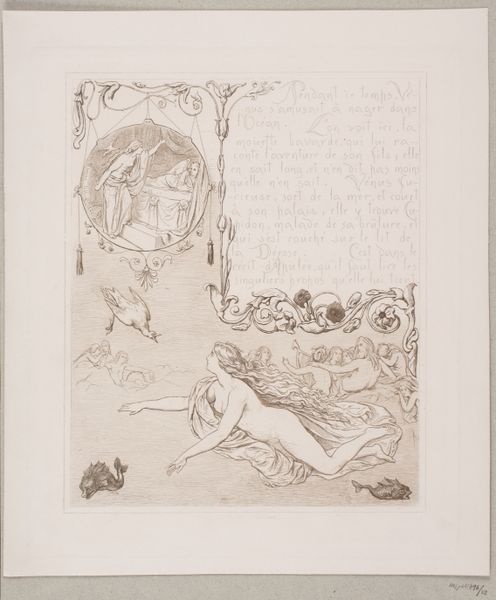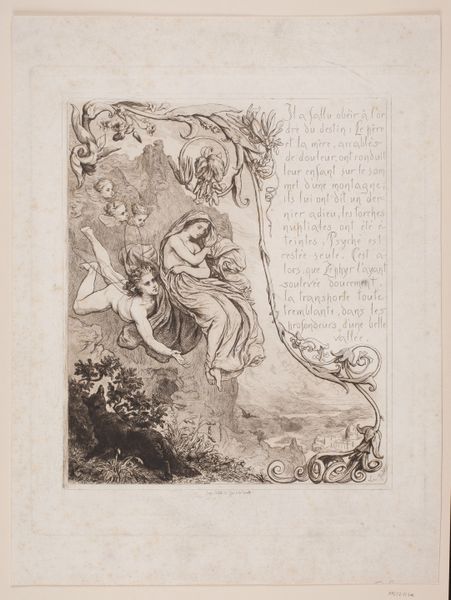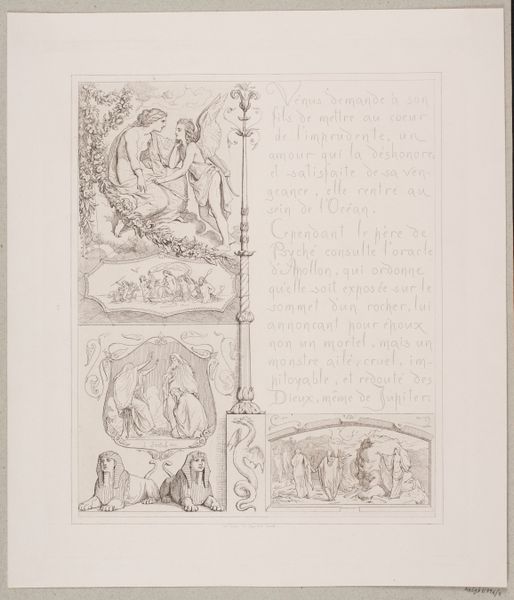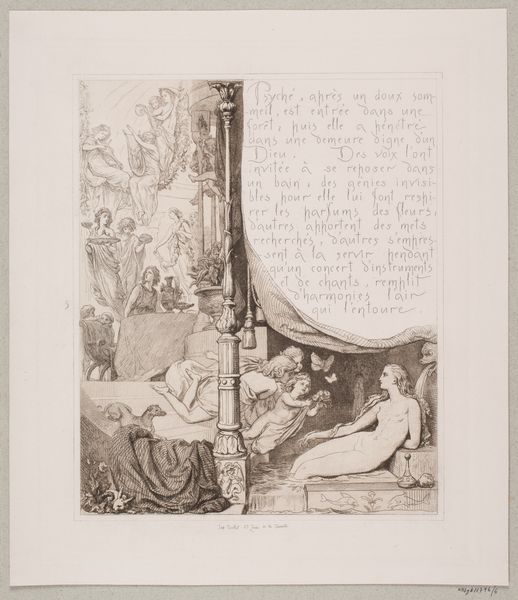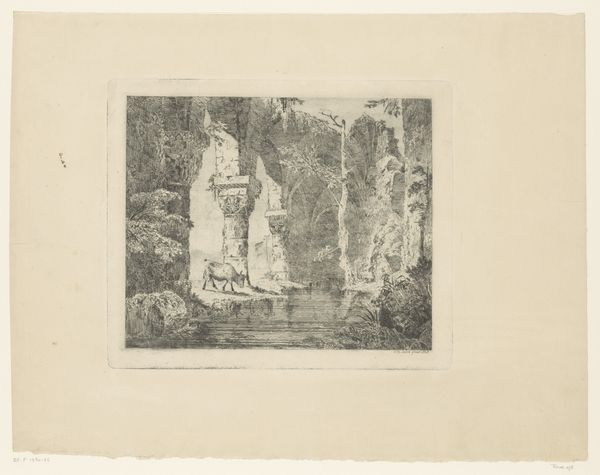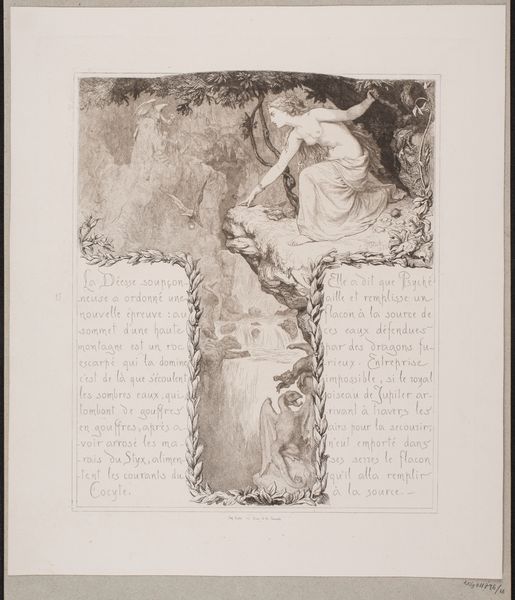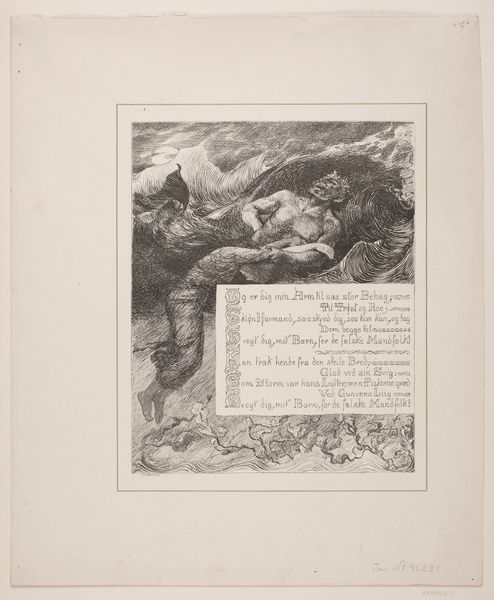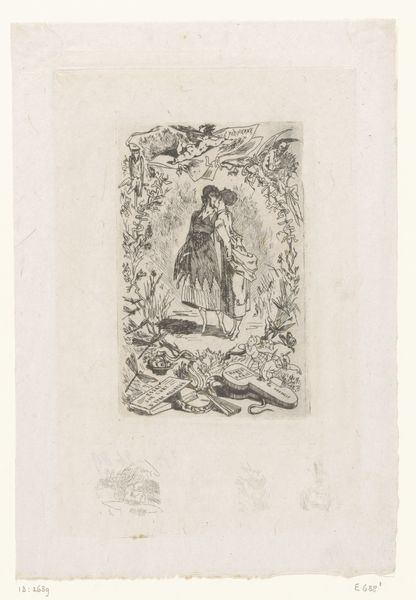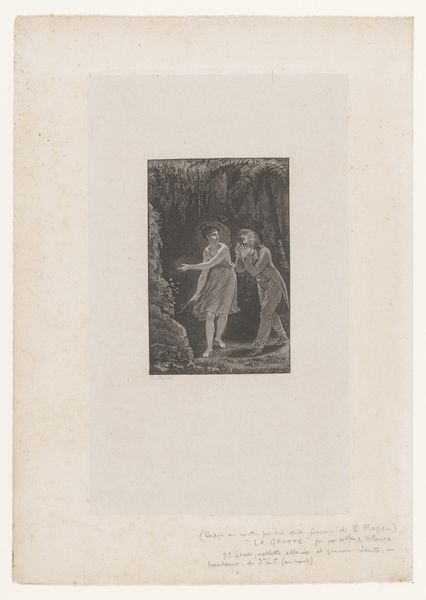
drawing, print, engraving
#
drawing
# print
#
landscape
#
figuration
#
line
#
history-painting
#
northern-renaissance
#
engraving
Dimensions: 357 mm (height) x 304 mm (width) (bladmaal)
Curator: Let's delve into Lorenz Frølich's 1862 engraving, "Illustration nr. 14 til 'L`Amour et Psyché'," currently housed here at the SMK. It’s a remarkable example of his narrative illustration style. Editor: Immediately, the linear precision and delicate shading strike me. There's an almost dreamlike quality to the rendering of the figures and the landscape—ethereal, wouldn’t you say? Curator: Absolutely, and the historical context enriches that sensation. Frølich was deeply engaged in illustrating classical myths and Norse sagas, often imbuing them with a Romantic sensibility that reflected the cultural tastes of 19th-century Denmark. He secured a central role at the intersection of fine art and popular culture through this. Editor: The composition, divided into these distinct registers, contributes to its intriguing structure. We have the central scene and then these smaller vignettes below, all tied together by that floral garland. It reminds me of Renaissance tapestries and early book illustration, but is there a thematic significance in this layering? Curator: Certainly. The upper scene depicts Psyche encountering a nymph, prefiguring her trials. The lower register illustrates tasks set by Venus. This visual layering reinforces the narrative arc. Frølich was quite intentional in shaping this morality tale for contemporary audiences, highlighting themes of virtue and consequence. The work entered the Royal Collection, which then became SMK; how it might shape understandings of history was no doubt part of the collection rationale. Editor: I’m drawn to the contrast between the sharply defined figures and the more atmospheric background. The landscape is evocative but also feels somewhat stylized—less concerned with mimetic accuracy than with creating a mood. The graphic qualities are wonderfully apparent. Curator: Yes, he adeptly synthesizes linear precision with a broader emotive sensibility, indicative of his broader oeuvre in painting, illustration, and tapestry work. His images often were meant for moralizing children’s stories. Editor: This engraving provides such a fascinating glimpse into 19th-century artistic values and Frølich’s skills. I appreciate his use of line to guide the eye and evoke emotion in this interpretation of myth. Curator: And for understanding how narrative and visual language are marshaled for cultural projects of that era. A gem to ponder for modern audiences, certainly.
Comments
No comments
Be the first to comment and join the conversation on the ultimate creative platform.
